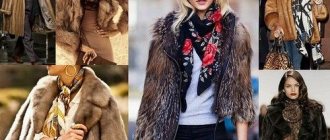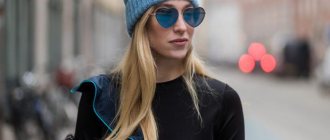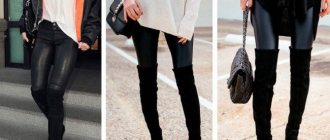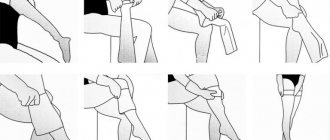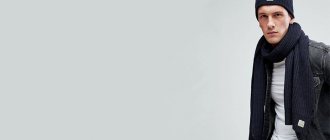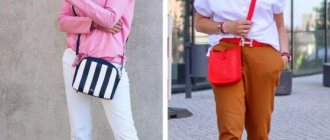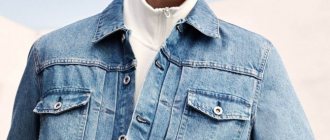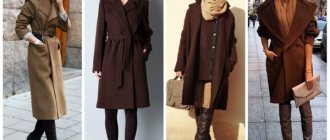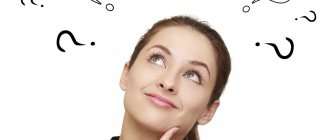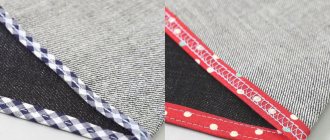What does a shemagh look like?
The arafatka is popular among Arabs and is worn during extreme heat to prevent the possibility of sunstroke. The scarf perfectly protects from strong and “prickly” winds. Arabs usually complement this accessory with a black hoop placed on the head. It helps to fix the keffiyeh, preventing it from falling. With frequent winds in desert places this is important.
In Arab countries, they know especially well how to tie a shemagh, so it is worn in different ways. In some Eastern countries, a scarf is worn on the head, simply thrown over it, it is not fixed in anything. In Oman, a special turban is made from fabric.
Arafatka in the army
But in general, all these disputes around the arafatka look very naive, since this scarf has long been used by the military of various armies, including the United States. The practicality of the arafatka in hot and arid environments (Afghanistan, Iraq or Africa) explains its popularity among soldiers. Soldiers often wear a shemagh, folded into a triangle and wrapped around the head, to protect the face and eyes from sand. In addition to its main purpose, the arafatka has several other uses among soldiers.
- Here are just a few of them:
- As a shield for the head, neck and eyes from the sun or snow, wind, sand and dust.
- As a means of camouflage - to hide the face.
- Like RF around the neck – keeps the temperature warm in cold weather and protects the neck in hot sunny conditions.
- Like a big umbrella.
- Like an aphid to support a wounded hand.
- Like mulberry - a replacement for a lost sock.
- Like a shock for moving equipment.
- Like a towel.
- Like a soft rope.
Due to its versatility, the Palestinian scarf has become popular among fishermen, taiga dwellers and tourists. In hiking conditions, the arafatka protects well from mosquitoes, cobwebs, branches and other minor troubles that can await you in the wild, and even helps out in difficult situations. To wear in an urban environment, instead of a scarf or shawl, you can use a shemagh made of any type of fabric and any color. But for natural conditions, it is better to choose cotton scarves or with a minimal addition of synthetics - they are more comfortable, especially if you use a shemagh as a mask. For taiga dwellers and hunters, camouflage colors are best suited - army green or khaki.
Appearance
The name “Arafatka” appeared as a result of the conflict in Palestine. Yasser Arafat, the leader of the Palestinians, wore the keffiyeh in a special way that was different from the usual ones. The falling end was on the shoulders.
In the countries of the East, arafatkas were also used by ordinary British soldiers for protection from bad weather or heat.
In the 20th century, the keffiyeh became a fashionable attribute; it was used by many girls who knew exactly how to tie a shemagh around their neck.
The usual color of the arafatka is a checkered print, usually made in black and white. Later, a huge number of different colors appear, but one thing remains familiar – the checkered pattern.
Some people sometimes prefer a solid color. For example, American soldiers often wear shemags in olive and sand colors, thereby solving two problems. Firstly, this is a great way to hide from the enemy in the sand, and secondly, to protect yourself from the sun's rays.
The composition of keffiyeh fabric is based on natural ingredients; it is made from wool or cotton without any impurities. Thanks to this, air circulates and the skin under the scarf constantly breathes.
Characteristic
Arafatka (shemag, keffiyeh) is the name given to a wide checkered scarf that is found in the wardrobe of every Eastern man. The product was named in honor of Palestinian leader Yasser Arafat. For Arabs, this product is an unshakable symbol of the East. In modern society, arafat women are very popular among men of different nationalities and religions. Shemagh is also widely used among the military.
It is generally accepted that the characteristic checkered pattern was invented by the British, since residents of Arab countries wore exclusively light, plain keffiyeh. According to history, the British added this pattern to the colors of the shemagh for the soldiers (Bedouins) of their Arab Legion. In addition to the classic (black and white) colors, there are pink and crimson arafatkas. Options for a Palestinian scarf in purple or a combination of black-yellow and white-red tones are also possible. In the Gulf countries, it is the snow-white shemagh that is very popular.
The design on an Arabic scarf is created by interweaving threads. Arafats are woven from wool and cotton threads. On the modern market there are products made of viscose or synthetics. Shemags also vary in density. A scarf made of lightweight material is relevant for the summer, and a woolen version is suitable for autumn and winter. Arafatka goes well with a sporty style. Young guys prefer to tie a shemagh in combination with denim and high “army” boots. A stylishly tied arafat around the neck also harmonizes with bright T-shirts.
But the “synthesis” of the classical style and arafatka is hardly acceptable.
In addition to its aesthetic function, the Arabic scarf:
- protects the head from gusty winds, sand and dust;
- acts as a facial camouflage;
- replaces a footcloth or cloth to support a crippled hand;
- in extreme conditions it becomes a “bag”.
How to tie a shemagh around the neck?
Most often, the arafat is tied around the neck, following the classic method. Therefore, the answer to the question of how to tie a shemagh is this option. There are, however, several other methods that are also popular.
- Classic - to do this you need to fold the keffiyeh diagonally to form a triangle. The top of it should be on the chest, and the ends should be crossed at the back of the head, and then brought back, leading forward. The ends can be left in this position or tied in a neat knot and hidden.
- With a tourniquet, the scarf is also folded diagonally, twisted and draped over the neck.
- Extravagant - a scarf folded into a triangle is placed on the chest in a known way, but the ends are tied at the back and remain there.
- Elegant - this option is suitable for unusual and creative people, as it emphasizes this. The fabric is folded into a triangle, draped over the shoulders, and then tied at the front with two knots that are not too tight.
Knowing how to tie a shemagh in different ways, a person can look stylish and fashionable. Also, a properly tied arafatka can provide good protection.
How women wear
Women prefer to tie a keffiyeh as a headdress, scarf, trouser belt, or skirt. This element is widely used, attached to the neck, with a black biker jacket, dark classic trousers or jeans. Your feet may be wearing sports sneakers or high boots. In the summer months, an oriental scarf is an addition to bright sundresses, light classic tops, and shorts.
An Arabic scarf tied in a bow on a large leather bag looks good.
Knowing how to tie an arafat, you can create many unique images. This item adds individuality and adds zest to your wardrobe. To learn how to create stylish images, you should not be afraid to experiment.
Shemagh for the head
The keffiyeh was originally intended to be worn on the head, so there are many ways to demonstrate how to tie a shemagh on the head:
- Classic is the most common method, which is based on simply throwing a scarf over your head.
- Berber - the scarf is folded in half and placed on the head, with one end placed on the shoulder. On the other side, the fabric is folded over the ear. The free part is applied to the face so that the fabric covers the eyes. The back of the head is completely wrapped with this part of the arafatka and fastened on the other side. The same is done with the other half.
A little history of Arafatka
If you look at the history of the scarf, which was made popular by former Palestinian President Yasser Arafat, you can discover its peasant roots. Initially, the keffiyeh served the Arab poor as a simple headdress that protected their heads well from the scorching sun. In 1936, the Mufti of Jerusalem, Mohammed Amin Al-Husseini, banned Moroccan fezzes and declared the keffiyeh the only correct head covering for Palestinians. Since then, the Arafat woman has become a symbol of proletarian class consciousness and resistance to the Zionists. And the “legislator of the cover” himself, the mufti, a protégé of Hitler’s Germany, for some remained the first freedom fighter, for others - a tyrant who hated Jews. Pope Benedict XVI once received a traditional Arabic headscarf as a gift.
This scarf was presented to Benedict XVI by Palestinian Catholics during an audience in St. Peter's Square in the Vatican. Palestinians who arrived at the Vatican from Bethlehem threw a scarf over the Pope's shoulders, and he shook their hands. Taking into account the decades-long Israeli-Palestinian conflict, some “smart guys” are still trying to put political meaning into the arafat shirt, accusing those who dared to wear it of many sins, including supporting terrorism. They do not want to notice that the world is changing, and with it the human perception of many things is changing. Need I say that groundless accusations against young people who have no idea about Yasser Arafat, but wear a headscarf named after him, are precisely fueling political passions and inciting national conflicts? What, exactly, are taiga dwellers or fishermen guilty of? Is it because they chose the wrong pattern for the protective scarf, or because the fringe is only on two sides and not on all four, or maybe because they tied it in the Arabic style? “Fuck you...”, our men will say and they will be absolutely right))
Mask
A mask is one of the ways to tie a shemagh on your head.
It is necessary to fold the scarf diagonally, making a tight triangle. It then needs to be placed on the head so that one side is longer than the other. The long part should be twisted with a flagellum and circled around the chin, moving to the opposite side. Leave the long end and cover part of the face with the short one. They, that is, the smaller ones, need to wrap the back of the head and carry it to the other side. Next, both ends need to be connected with a knot, and the fabric itself should be put in order, straightening it as necessary.
As you can see, tying a shemagh is not that difficult. Just practice a little and everything will work out.
Popular methods
In the previous sections, traditional patterns for tying arafatka were discussed. But since this accessory is in great demand, fashionistas have invented many other popular options (Figure 5).
Figure 5. There are many ways to tie a keffiyeh.
For example, you can make a turban from arafatka. To do this, fold the scarf into a triangle and put it on the head. The free ends of the scarf should be in front. Twist the right end with a tourniquet, wrap it around the neck and forehead and secure it at the back. Perform similar actions with the other end and tie them at the back with a knot. With this method of tying, the face remains open.
If desired, the keffiyeh can be tied on the handle of a bag, on the loops of a backpack, or wrapped around the hips. In fact, it all depends on your imagination, and this accessory will not only make your style unique, but will also help out in difficult extreme situations.
Simple ways to tie this oriental scarf can be seen in the video.
Wearing arafatka is becoming increasingly popular. Initially, this accessory was used only in the East, but now it can be seen in many countries around the world. Depending on how you tie the arafat, you can create an attractive look. It can be a headdress, a mask, a scarf.
Application of keffiyeh
Shemagh is a universal remedy; it is considered indispensable in Eastern countries. They don’t even dare leave home without it. This is explained not only by ethical considerations, but also by safety considerations.
The versatility of arafatka lies in the fact that it can be used:
- As protection from dust, sand, as well as from the hot rays of the sun. A keffiyeh worn over the face helps protect the respiratory tract from dirt.
- As a means of protection from cold and snow in winter, keffiyeh provides excellent warmth, since it is made of wool; it prevents cold air from penetrating under clothing.
- As a way to prevent burns. In the hot desert, the sun is very hot, so this often has a negative effect on the skin. The best option would be to wear a light-colored shemagh, which does not attract heat and reflects the sun's rays.
- As an additional aid in cases where the arm is broken. This is especially true for soldiers, they do not have time to look for special devices. You can wrap the keffiyeh around your arm and secure it by tying the scarf around your shoulder with a strong knot.
Why do we need arafatka in modern living conditions?
Of course, if you do not live in the desert or in other similar countries and your country has a normal climate, you may ask a completely reasonable question: why do I need this scarf?
But I would like to tell you why it is needed. I think that after you get acquainted with all the advantages of this practical and original little thing, you will want to become its owner.
For any city dweller, arafatka is ideal as a scarf around the neck. Not only does it look very stylish, but it also serves very useful purposes. In the cold season, it will reliably warm your neck and prevent you from freezing, and in hot weather it will serve as an excellent protection from the sun and heat, just like yellow helba tea.
If you are going on a trip to hot countries, then the keffiyeh will serve its original purpose: in combination with large sunglasses, it will reliably protect your head and face from chapping, overheating and sand.
What style of clothing can you combine with arafatka?
The Arabic arafat shirt itself is a very original piece of clothing. Therefore, you need to be able to choose an image that will combine favorably with it. It will look best with a safari style. You can also use denim or military style clothing. The arafatka will look quite appropriate and very original with a leather skirt or sundress.
Also, the keffiyeh will appeal to those who prefer ethnic style in clothing. With its help you can add a touch of ethnicity to your image.
What to combine with
The variety of colors of the Arabic scarf allows it to be used as a modern accessory in conjunction with different styles. Representatives of various subcultures prefer to wear this element.
Keffiyeh goes well with military and casual styles. The following look great with this accessory:
- leather items;
- classic coats;
- jeans;
- classic pants;
- T-shirts.
Men love to wear the keffiyeh with sneakers and a leather jacket. If desired, you can complement the look with a cap. Typically, a classic oriental scarf is worn with plain clothes.
If representatives of the stronger sex are interested in how arafatka is worn, they should know that this element goes well with Arabic shoes.

